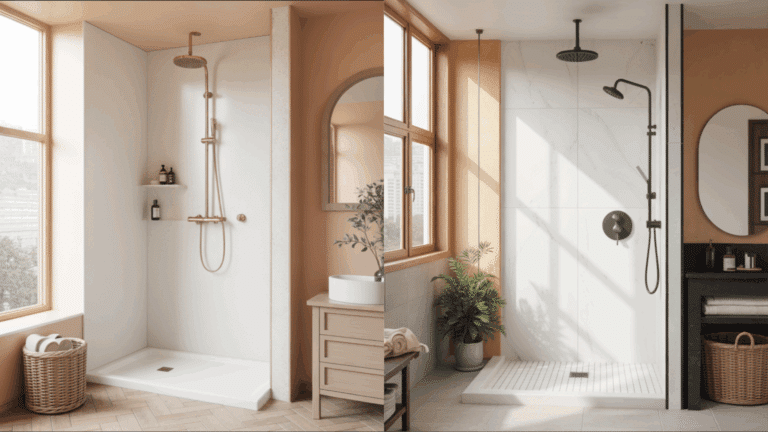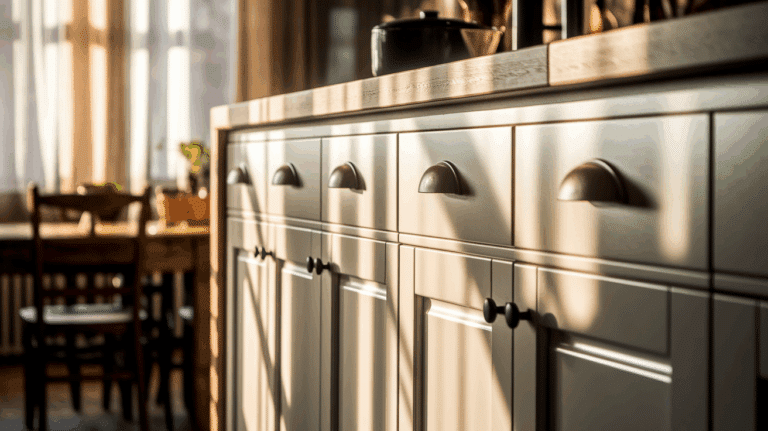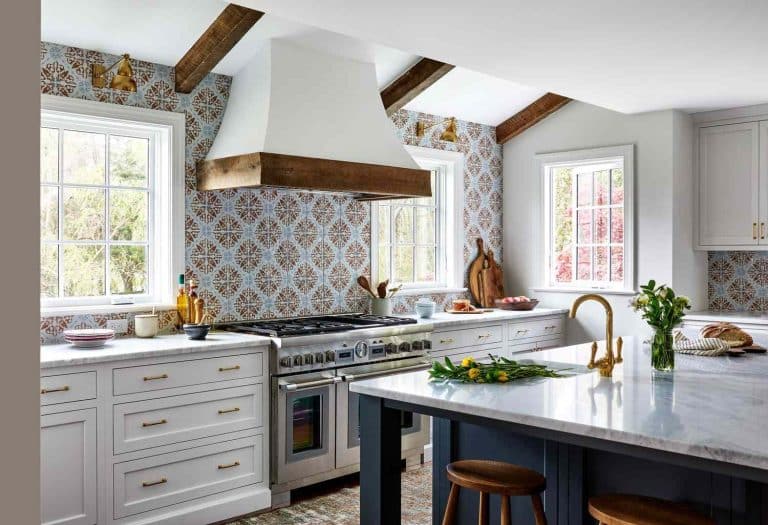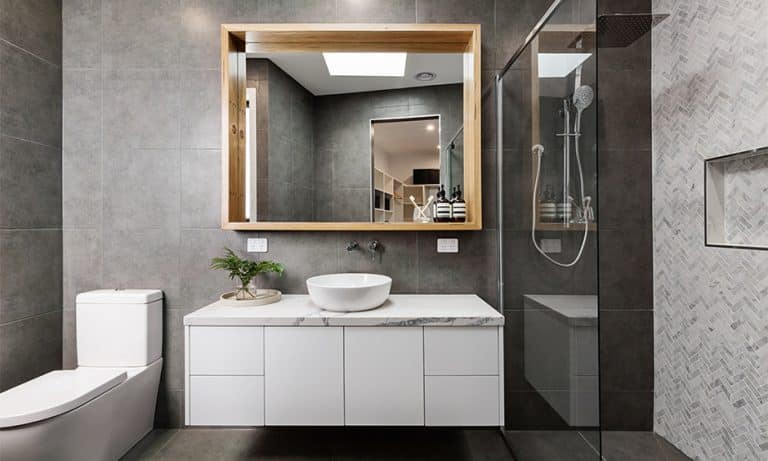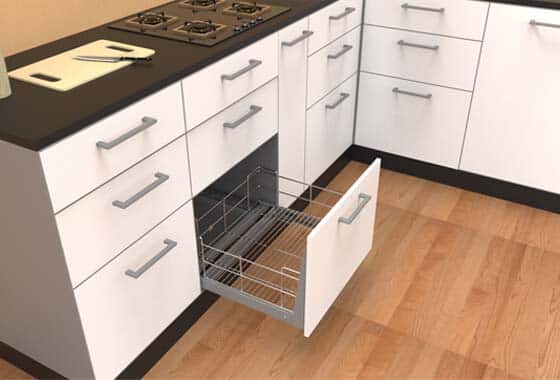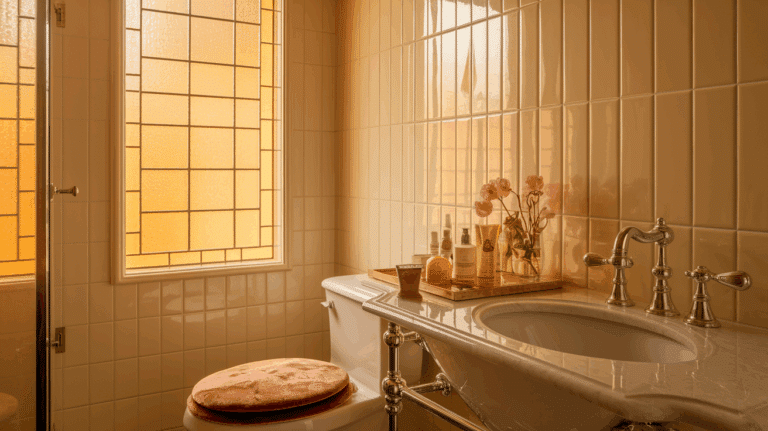How to Create a Kitchen Organization Layout
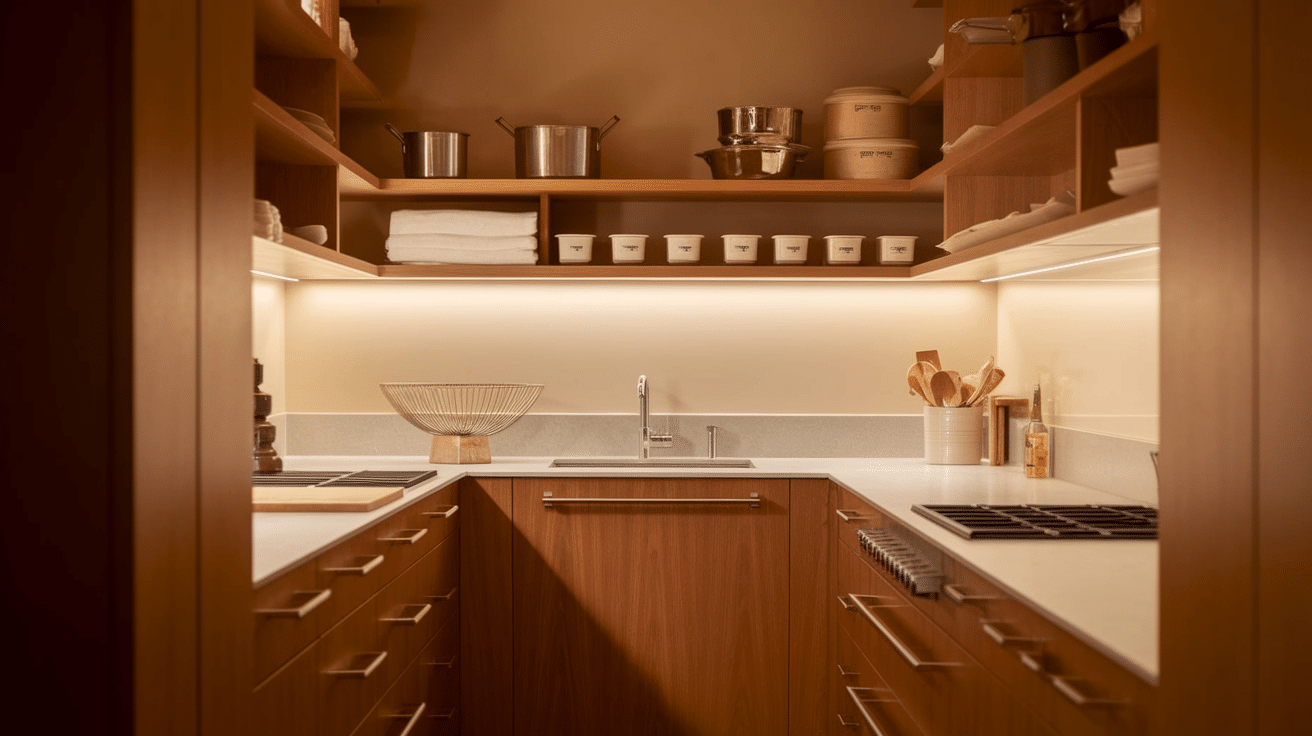
Looking to fix your kitchen mess? A well-planned kitchen layout makes cooking easier and more enjoyable.
When everything has its place, you spend less time searching and more time creating tasty meals.
This guide outlines practical kitchen organization methods for kitchens of all sizes. You’ll learn how to arrange your cooking space for better flow, store items where they make sense, and create a kitchen that feels less cramped.
No fancy remodeling is needed, just smart planning and simple changes. Ready to change your kitchen from chaotic to functional? Let’s look at some straightforward steps that will help you build a kitchen layout that actually works for your daily life.
Understanding Kitchen Layouts
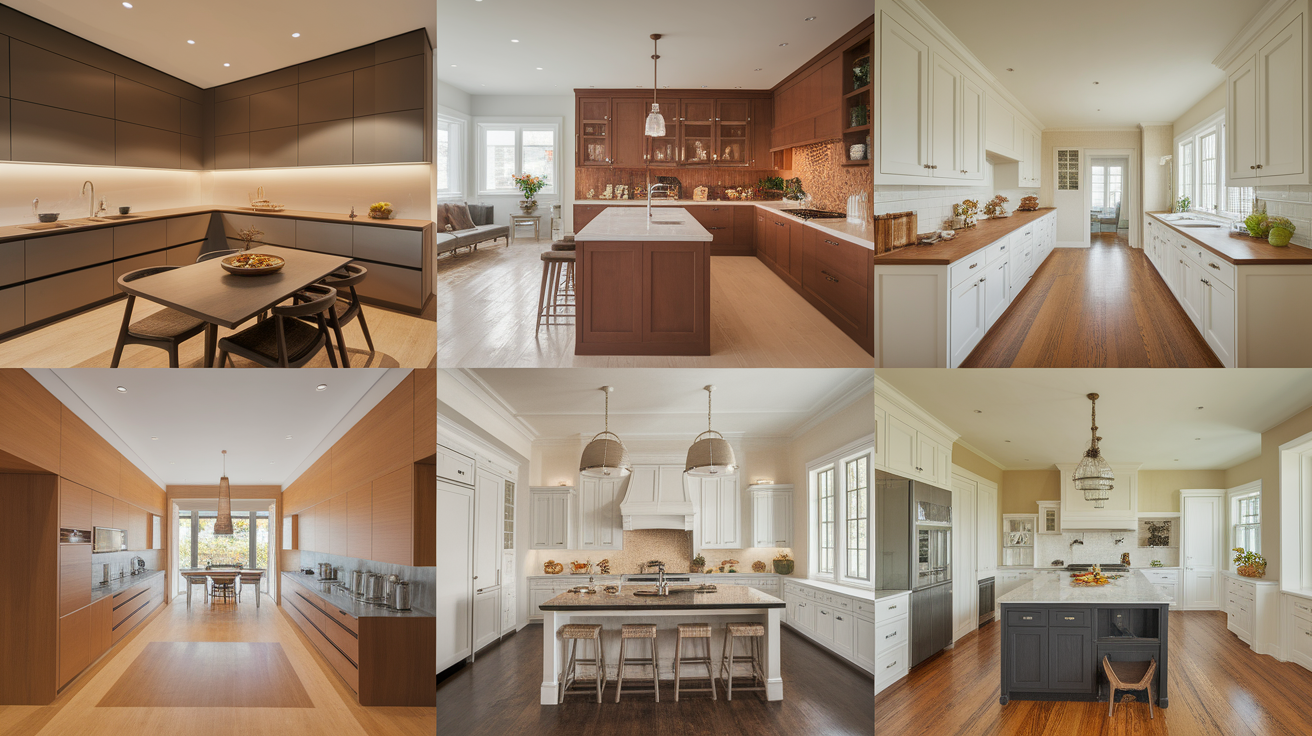
Choosing the right kitchen layout is crucial for creating a functional and comfortable space that suits your lifestyle and cooking habits. Take a look at these kitchen layouts.
- L-Shaped Kitchen: An L-shaped layout places cabinets along two adjoining walls, forming an efficient work triangle. It’s great for open spaces, keeping cooking zones organized while leaving room for dining or gathering.
- U-Shaped Kitchen: With cabinets along three walls, U-shaped kitchens maximize storage and counter space. This layout suits larger kitchens, offering separate zones for prep, cooking, and cleanup while improving workflow.
- Galley Kitchen: Galley kitchens have two parallel walls and a central walkway. Ideal for smaller spaces, they create a streamlined, efficient flow between appliances, ensuring everything is within easy reach.
- Island Kitchen: Island layouts feature a central workspace, often with a sink or stove. They add prep space and seating, encourage social cooking, and maintain smooth flow in open-concept homes.
Steps to Organize Your Kitchen Layout
Organizing your kitchen layout is a thoughtful process that combines functionality, creativity, and consistency. These steps will help make your kitchen into an efficient, stylish, and enjoyable space.
Step 1- Assess Your Current Kitchen Layout
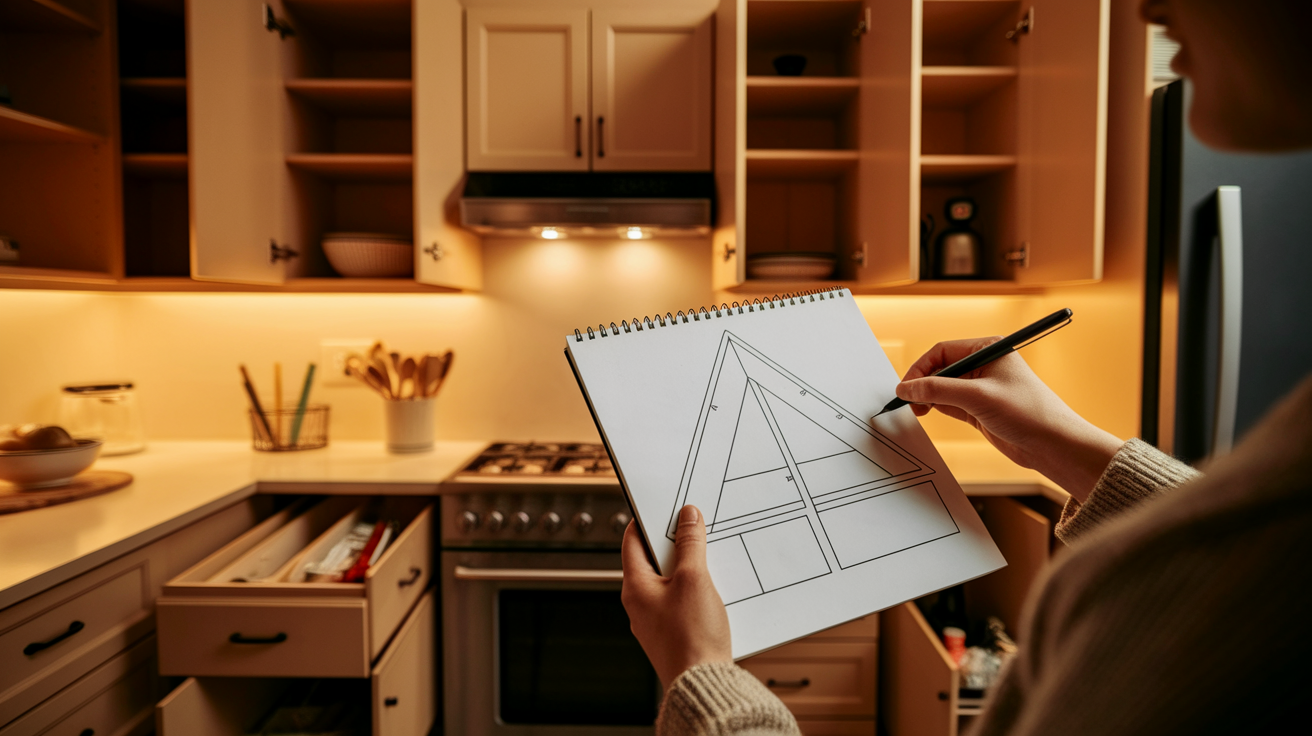
Start by analyzing what works and doesn’t in your current kitchen setup. Open cabinets and drawers, pulling out forgotten items or duplicates. Identify cramped areas, spill-prone spots, and inefficiencies.
Think about your daily routines: are frequently used items easily accessible? Check if your sink, stove, and fridge form a proper work triangle.
Make a diagram of the kitchen, highlighting problem areas, and measure counters, drawers, and shelves. This detailed assessment will help you identify real issues and guide effective changes.
Step 2 – Declutter Ruthlessly
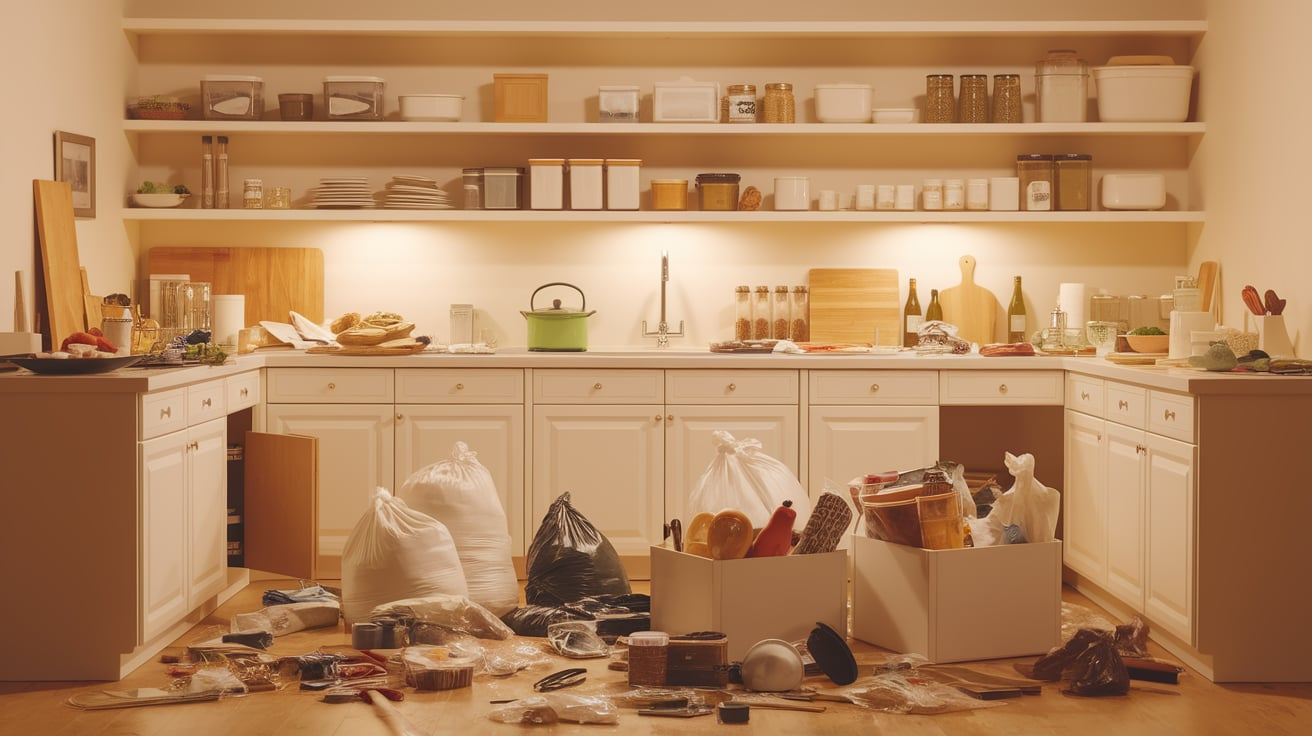
Decluttering is key to an organized kitchen. Evaluate each item honestly. If it hasn’t been used in the past year, it’s likely unnecessary. Discard broken tools, stained containers, and expired foods. Keep multi-functional gadgets and regularly used tools.
Set aside rarely-used items for higher storage or a different room. Donate or share items in good condition. The goal is to keep only practical, well-loved items.
With less clutter, storage and organization become simpler, and the kitchen feels more spacious without physical alterations.
Step 3 – Plan Your Zones
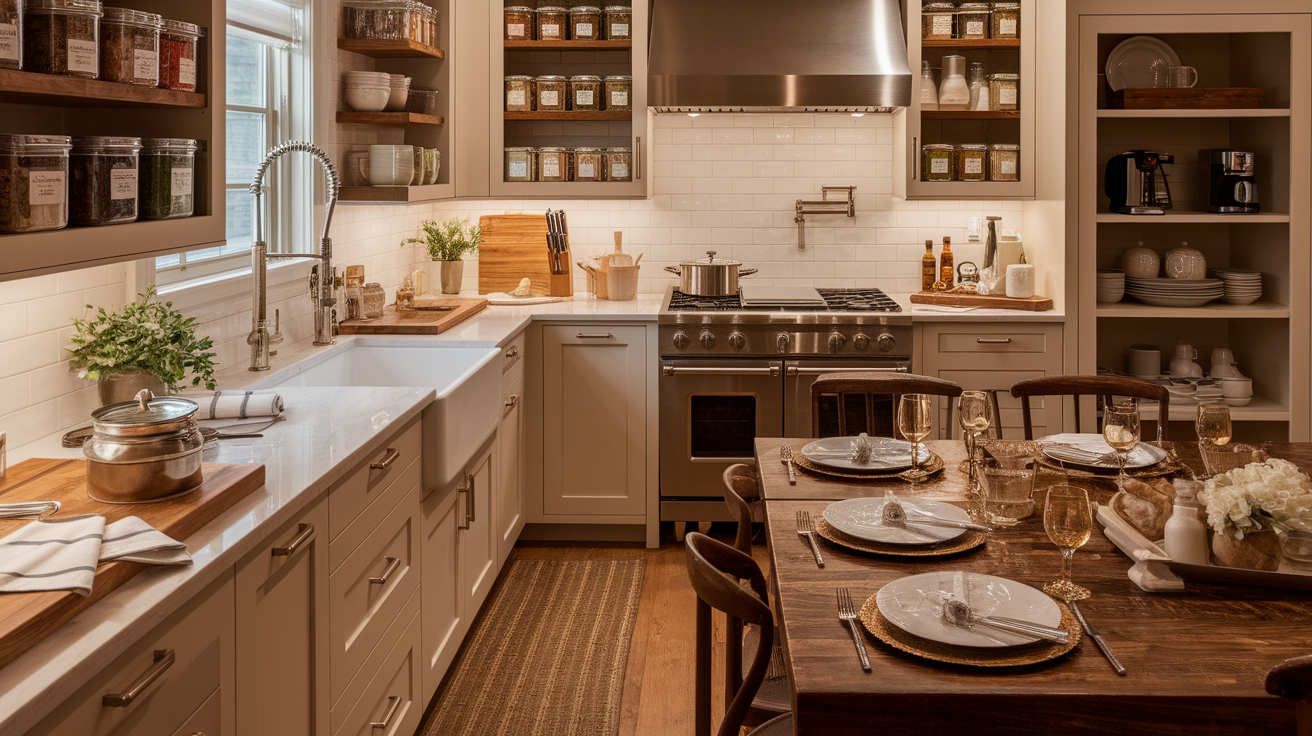
Divide your kitchen into functional zones: food storage, prep, cooking, cleaning, and serving. Assign items to their respective zones—store knives and cutting boards in the prep area, pots near the stove, and dishes in the serving area.
Group coffee supplies at a coffee station and baking essentials together. This minimizes unnecessary movement while preparing meals.
While small kitchens may have overlapping zones, defining these areas streamlines tasks and ensures an efficient and intuitive kitchen layout.
Step 4 – Optimize Cabinet & Drawer Storage
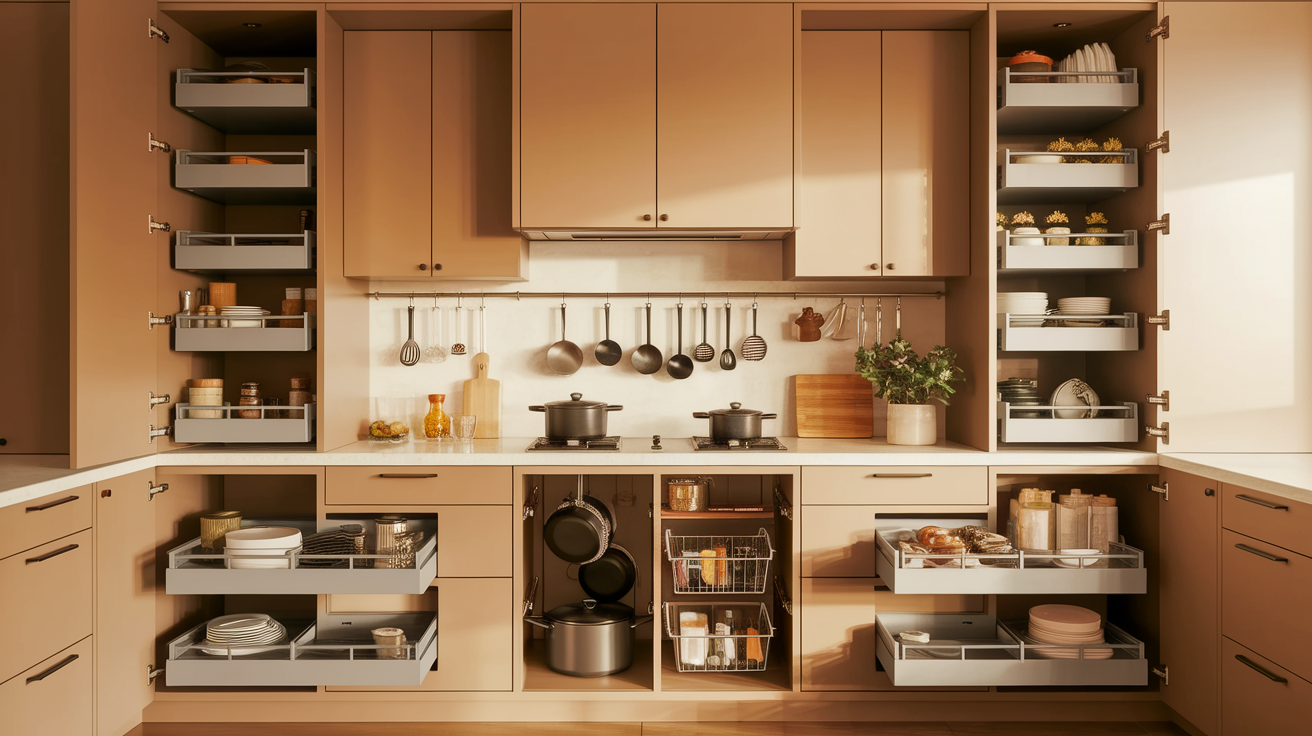
Maximize storage with smart solutions. Use shelf risers to create extra layers in tall cabinets and drawer dividers to organize utensils.
Install pull-out shelves in lower cabinets for easy access, and use pan organizers to store pots sideways.
Add hooks or bins to cabinet doors for smaller items. Groups frequently used items together, like coffee supplies or common spices. Store everyday items within reach and reserve higher shelves for infrequent-use items.
Step 5 – Organize the Pantry
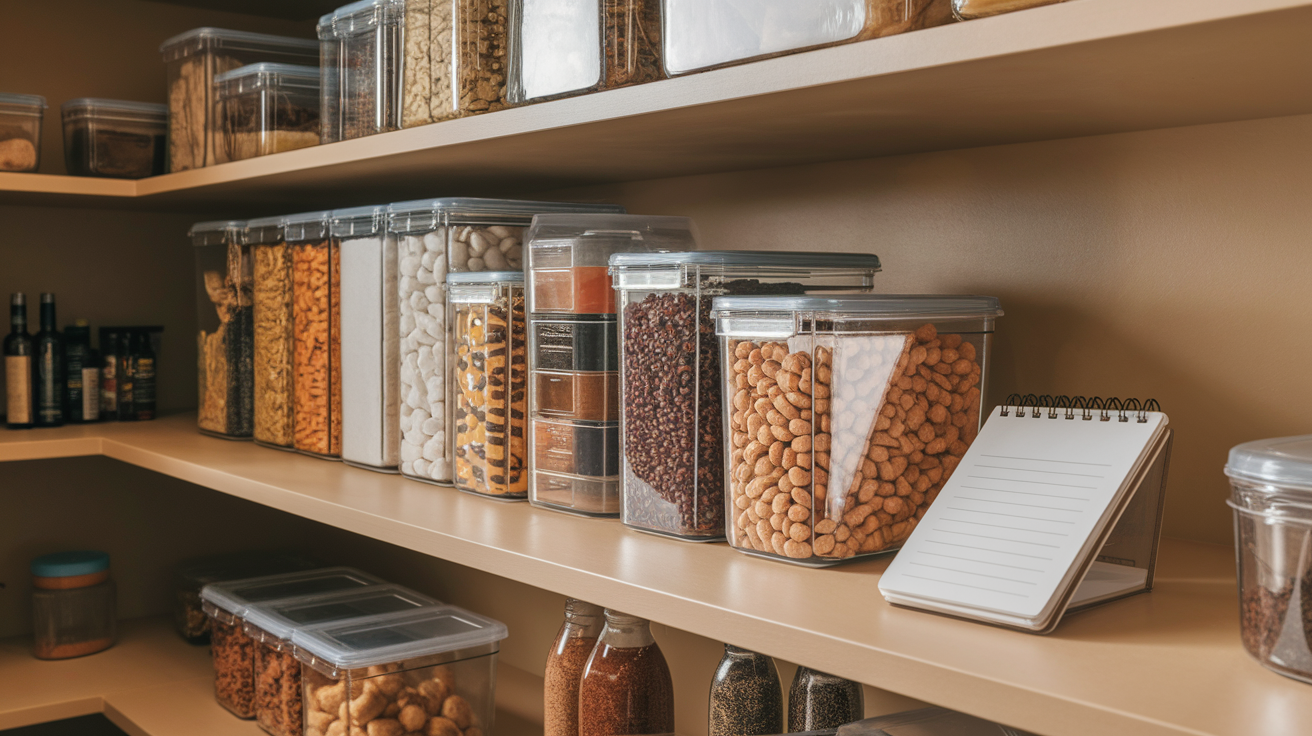
An orderly pantry simplifies meal prep. Start by emptying and cleaning the shelves. Check expiration dates and discard expired food.
Group items like breakfast supplies, baking ingredients, and snacks. Store bulk items in clear containers, keeping food fresh while showing quantities at a glance. Label containers for easy identification. Place heavier items on lower shelves and lighter or kid-friendly snacks within reach.
Specialty items can be stored on higher shelves. Maintain a notepad nearby for tracking inventory and creating grocery lists.
Step 6 – Maximize Vertical Space
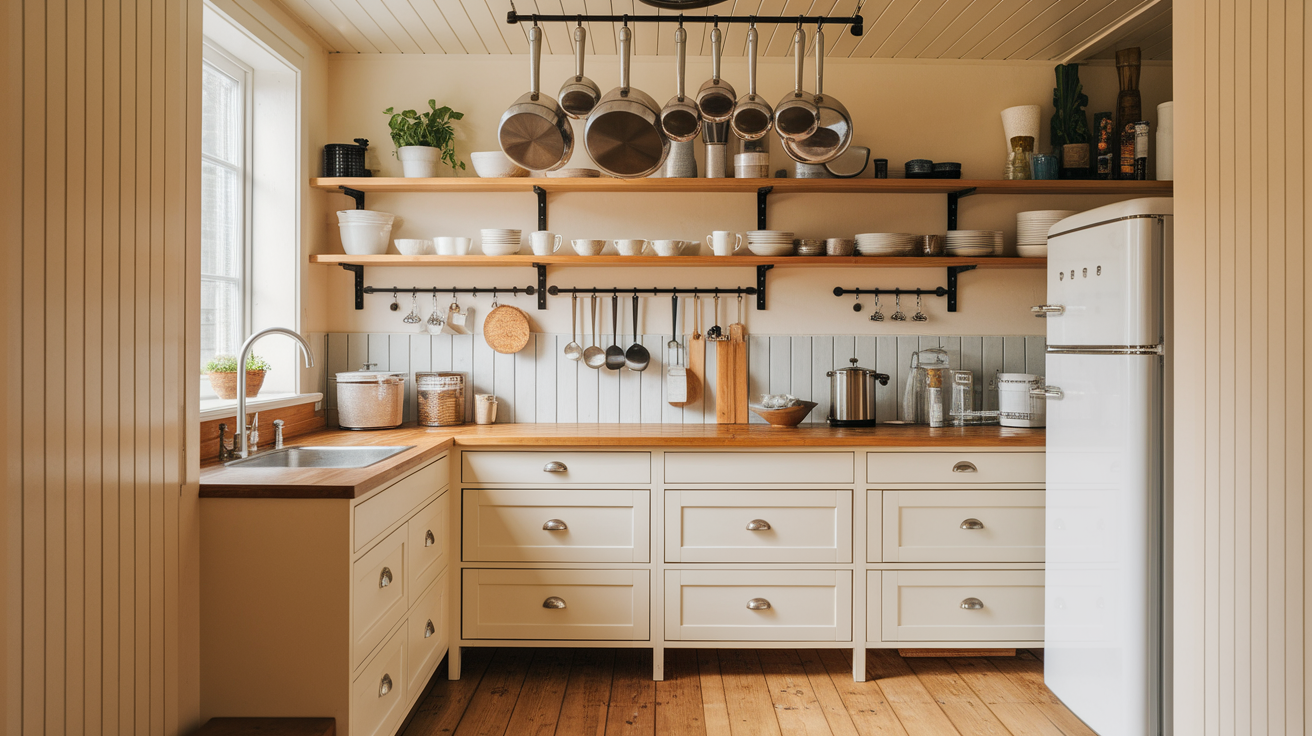
Take advantage of vertical areas for extra storage. Add shelves on empty walls for dishes or cookbooks. Install magnetic strips or spice racks on cabinet sides. Use ceiling-mounted racks for pots or wall rails for utensils.
Hooks beneath cabinets can hold mugs or measuring cups. Utilize space above the fridge for rarely used items, and consider open shelving by removing cabinet doors. Adhesive hooks can also be used on cabinet interiors to house small items.
Efficient vertical use maximizes space in smaller kitchens.
Step 7 – Maintain the System

Maintaining an organized kitchen requires regular effort. Dedicate 10 minutes daily to return items to their designated spots and clean as you cook to prevent mess buildup. Periodically review zones to prevent clutter and adjust systems if needed.
Apply the “one in, one out” rule for new items to avoid overcrowding. Regularly clean containers and shelves to maintain freshness.
Encourage family members to follow the system, labeling spots if necessary. Consistent maintenance ensures lasting organization and simplifies kitchen tasks.
Kitchen Organization Ideas
Organizing a kitchen makes it practical and stylish, helping you save space, keep items accessible, and enjoy a setup that fits your needs perfectly.
Here are some ideas for making your kitchen look unique.
1. Small Kitchen Solutions
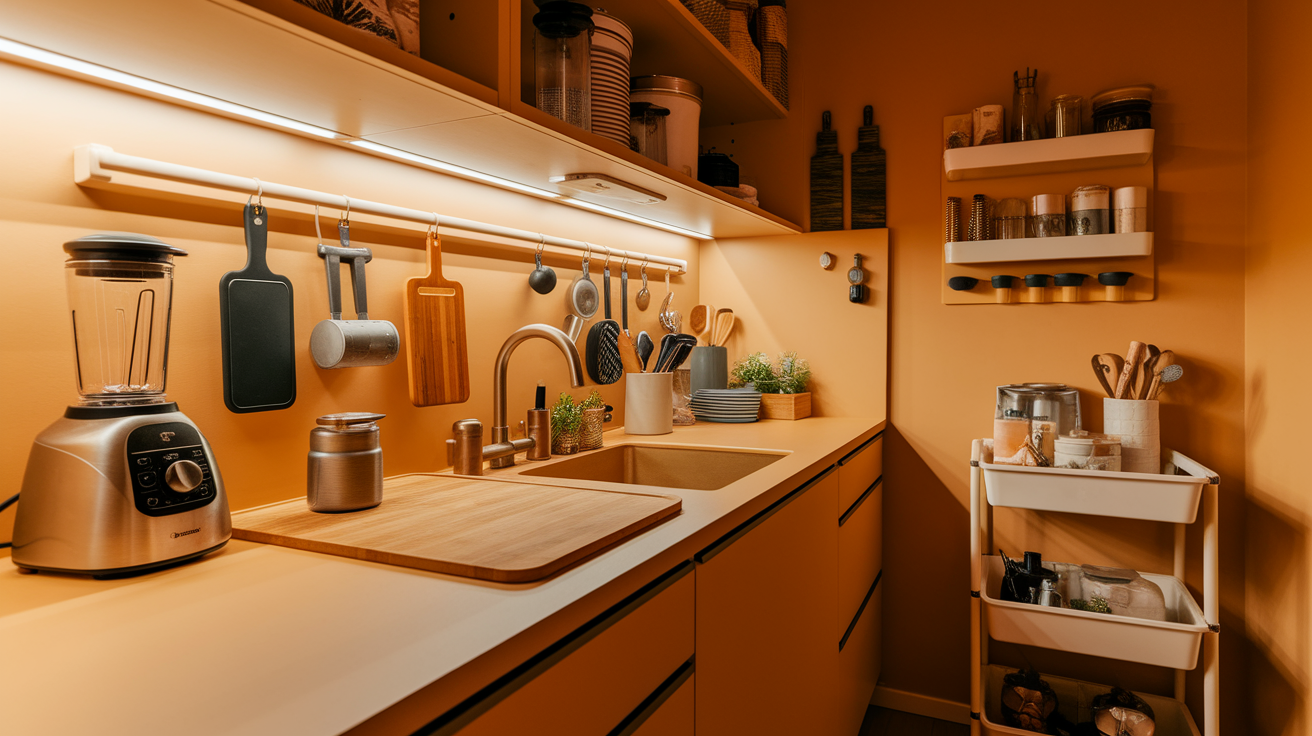
Make the most of limited space with clever tools and storage ideas.
Opt for multi-purpose gadgets like blenders that double as food processors, and collapsible measuring cups that save storage.
Use cabinet door interiors for spice racks or lid holders. Over-the-sink cutting boards create extra prep space. Magnetic spice containers free up cabinet room, while stackable storage and slim carts utilize unused spots. Maximize open wall space for additional functionality.
2. Luxury & High-End Ideas
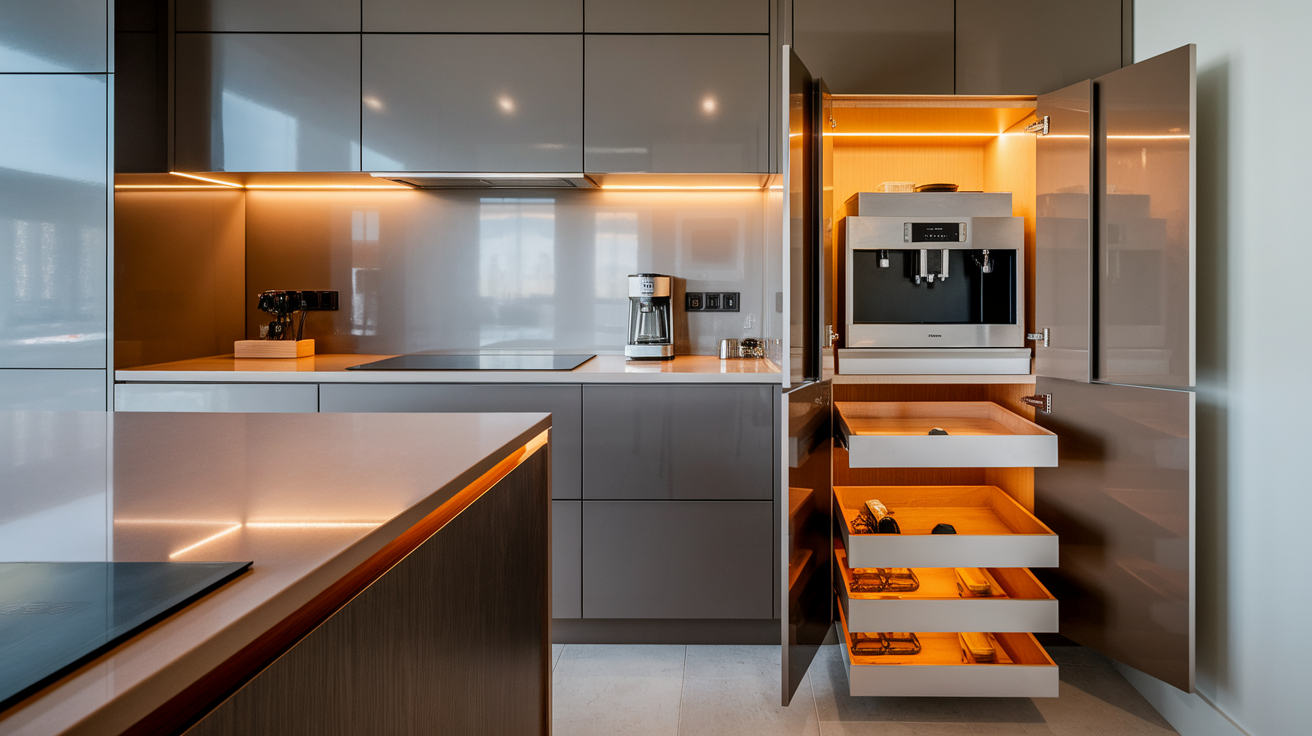
Luxury kitchens offer creative solutions for optimal organization and style. Built-in appliance garages hide items like coffee makers, while custom drawer inserts maximize space.
Pull-out pantries eliminate digging for supplies. Soft-close cabinetry and under-cabinet lighting provide convenience and a designed touch.
Motorized cabinets, warming drawers, and integrated water filters improve functionality. Hidden charging stations keep counters tidy.
Though expensive, these features add significant value, functionality, and a refined look to your kitchen.
3. Budget-Friendly Hacks
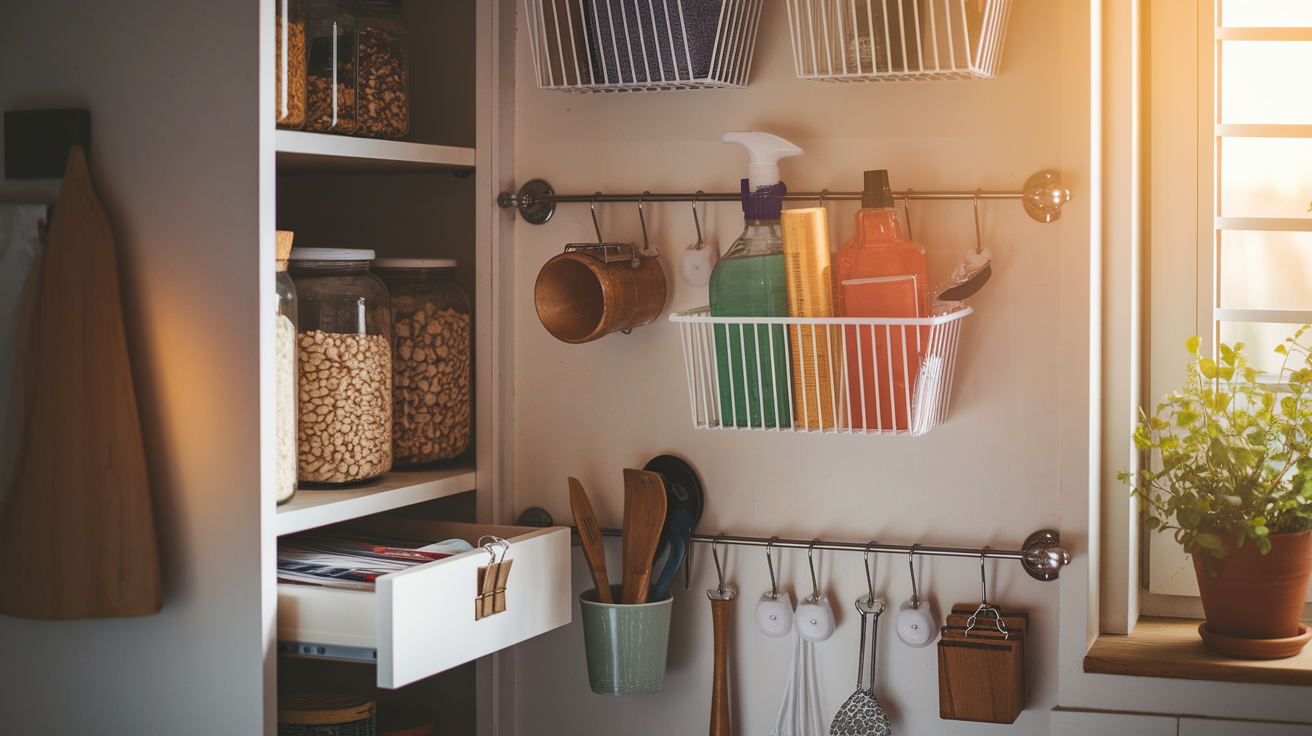
Creative solutions make kitchen organization affordable. Repurpose food jars for pantry storage, shower caddies for cleaning supplies, and magazine holders for baking sheets. Tension rods divide drawer spaces efficiently.
Old mugs store utensils, while binder clips seal open food packages. Use soda can holders for condiments and tissue boxes for grocery bags. Paint stir sticks can label shelves.
With resourceful thinking, household items become cost-effective and practical organizers for your kitchen.
4. Modern & Stylish Touches
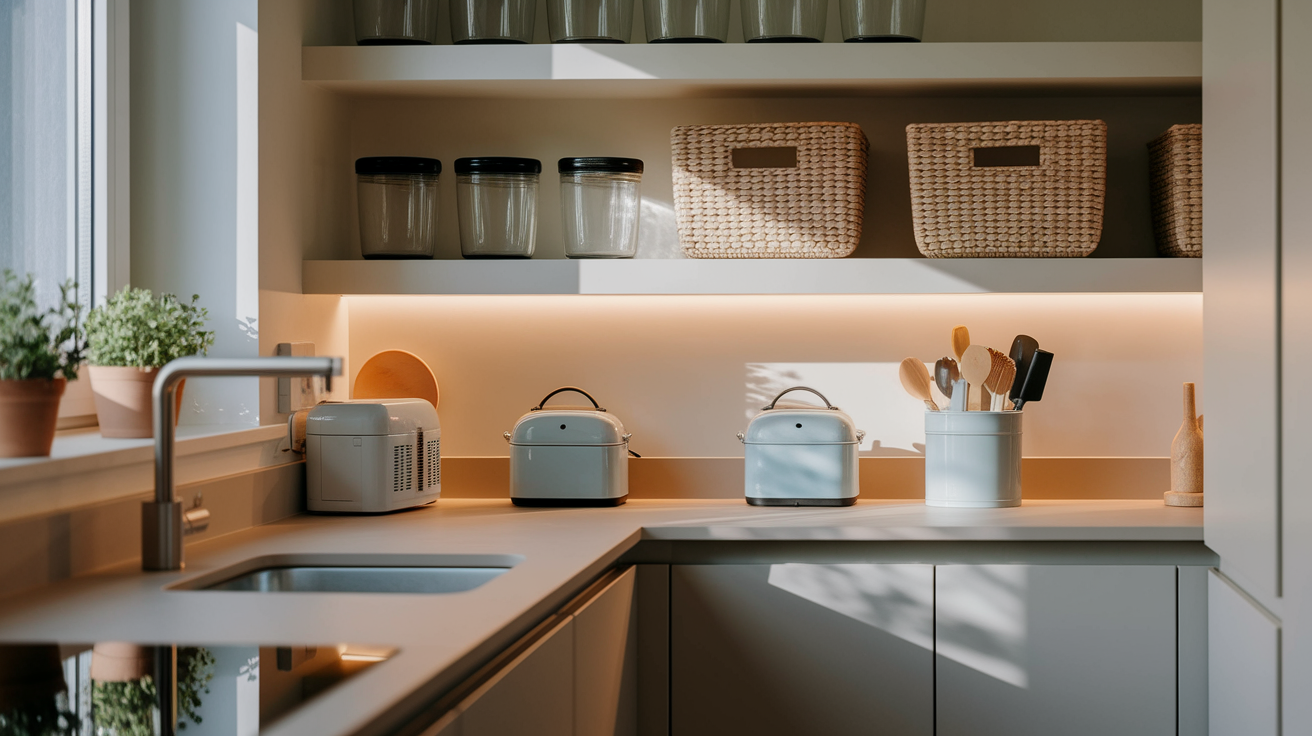
Functional kitchens can also shine with stylish choices. Use matching glass or plastic containers for a uniform pantry look.
Add small potted plants to brighten windowsills and corners. For visual harmony, select small appliances and tools in a consistent color scheme.
Pretty baskets or bins on open shelves hide clutter while maintaining appeal. Balancing style with function makes your kitchen visually pleasing and efficient a space that feels welcoming and organized.
Match Your Layout with Your Organization Style
| Organization Style | Best-Suited Kitchen Layout | Why It Works |
|---|---|---|
| Minimalist | L-Shaped or Island Layout | Clean lines and clutter-free surfaces. |
| Family-Friendly | U-Shaped or Island Layout | Extra storage and seating for family use. |
| Compact & Efficient | Galley Layout | Maximizes efficiency in small spaces. |
| Entertainer’s Style | Island or Open-Concept Layout | Ideal for socializing and serving guests. |
| Avid Home Chef | U-Shaped or L-Shaped Layout | Plenty of counter space for meal prep. |
| Eco-Friendly Organizer | Any layout with dedicated zones | Supports recycling and sustainable living. |
| Collector & Display Lover | Island or U-Shaped with Open Shelving | Great for showcasing cookware and decor. |
Pro Tips & Common Mistakes to Avoid
When designing or organizing your kitchen, a thoughtful approach can make all the difference. Here are some expert tips and pitfalls to watch out for during the process:
- Avoid overfilling drawers and ensure they open and close smoothly without force.
- Don’t block outlets with appliances or storage.
- Skip storing oils and spices next to the stove, as heat can damage them.
- Resist buying single-use gadgets unless you use them often.
- Never store onions and potatoes together, as they spoil faster.
- Don’t keep knives loose in drawers; they dull quickly and can cause injuries.
- Avoid stacking too many heavy items like plates, making them hard to access.
- Don’t block windows that bring in natural light.
- Remember: magazine-perfect kitchens often sacrifice practicality, so prioritize function over appearance.
- Avoid changing everything at once, as small, gradual improvements lead to lasting results.
By following these tips and staying mindful of common mistakes, you can create a kitchen that’s both efficient and enjoyable to use.
Conclusion
Creating a well-organized kitchen takes time but brings real rewards. The steps in this guide build on each other, so start with an assessment, then clear out what’s not needed, plan zones, and make smart use of storage spaces.
The right containers, dividers, and layout choices turn even small kitchens into highly useful cooking areas. Good kitchen systems grow with regular care and small adjustments.
What matters most is that the final setup works for the people who use the kitchen daily. When items have logical homes and cooking tools are stored near where they’re used, meal prep becomes smoother and more pleasant.
A thoughtfully arranged kitchen isn’t just about looks; it’s about making daily life easier and more enjoyable.

